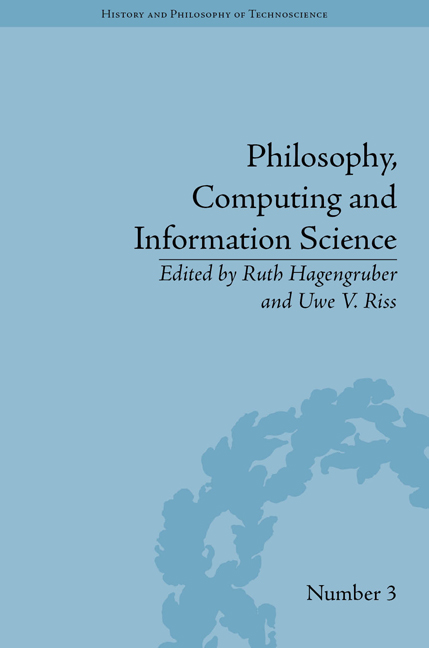Book contents
- Frontmatter
- CONTENTS
- List of Contributors
- List of Figures and Tables
- Introduction: Philosophy's Relevance in Computing and Information Science
- Part I Philosophy of Computing and Information
- Part II Complexity and System Theory
- Part III Ontology
- Part IV Knowledge Representation
- 10 Sophisticated Knowledge Representation and Reasoning Requires Philosophy
- 11 On Frames and Theory-Elements of Structuralism
- 12 Ontological Complexity and Human Culture
- Part V Action Theory
- Part VI Info-Computationalism
- Part VII Ethics
- Notes
- Index
11 - On Frames and Theory-Elements of Structuralism
from Part IV - Knowledge Representation
- Frontmatter
- CONTENTS
- List of Contributors
- List of Figures and Tables
- Introduction: Philosophy's Relevance in Computing and Information Science
- Part I Philosophy of Computing and Information
- Part II Complexity and System Theory
- Part III Ontology
- Part IV Knowledge Representation
- 10 Sophisticated Knowledge Representation and Reasoning Requires Philosophy
- 11 On Frames and Theory-Elements of Structuralism
- 12 Ontological Complexity and Human Culture
- Part V Action Theory
- Part VI Info-Computationalism
- Part VII Ethics
- Notes
- Index
Summary
Introduction
There are quite a few success stories illustrating philosophy's relevance to information science. One can cite, for example, Leibniz's work on a characteristica universalis and a corresponding calculus ratiocinator through which he aspired to reduce reasoning to calculating. It goes without saying that formal logic initiated research on decidability and computational complexity. But even beyond the realm of formal logic, philosophy has served as a source of inspiration for developments in information and computer science. At the end of the twentieth century, formal ontology emerged from a quest for a semantic foundation of information systems having a higher reusability than systems being available at the time. A success story that is less well documented is the advent of frame systems in computer science. Minsky is credited with having laid out the foundational ideas of such systems. There, the logic programming approach to knowledge representation is criticized by arguing that one should be more careful about the way human beings recognize objects and situations. Notably, the paper draws heavily on the writings of Kuhn and the Gestalt-theorists.
It is not our intent, however, to document the traces of the frame idea in the works of philosophers. What follows is, rather, an exposition of a methodology for representing scientific knowledge that is essentially frame-like. This methodology is labelled as structuralist theory of science or, in short, as structuralism. The frame-like character of its basic meta-theoretical concepts makes structuralism likely to be useful in knowledge representation.
Information
- Type
- Chapter
- Information
- Philosophy, Computing and Information Science , pp. 121 - 130Publisher: Pickering & ChattoFirst published in: 2014
